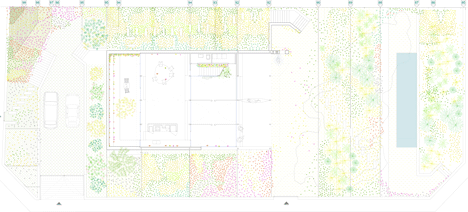Casos de Casas' plastic-clad house designed to adapt to all the Spanish seasons
Corrugated polycarbonate panels create varying levels of insulation around the exterior of this Spanish house by local architects Casos de Casas, designed to be comfortable for residents throughout the year (+ slideshow).
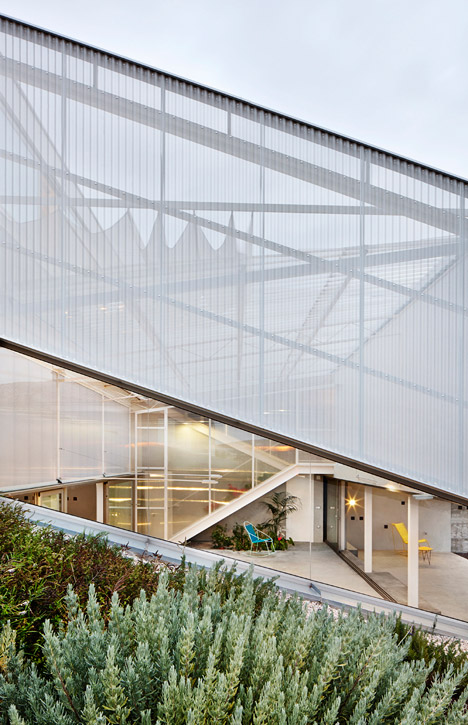
The four-bed property, named Seasonless House, steps across the sloping terrain above the densely built city of Vinaroz, in the coastal province of Castellón.
Casos de Casas split the 360-square-metre space into two volumes, positioned on either side of an enclosed concrete yard.
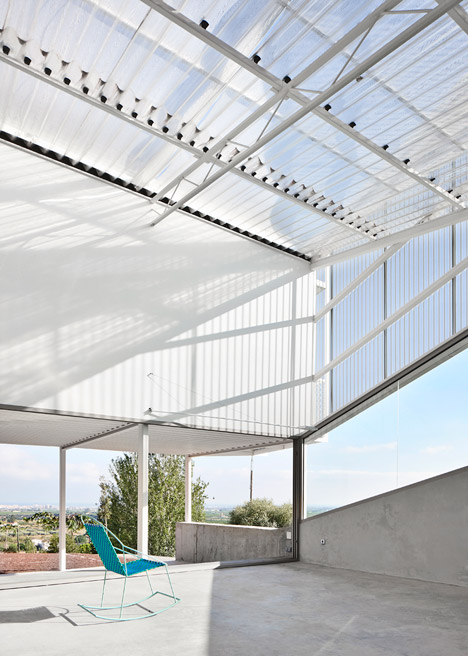
According to the architects, typical housing blocks crowd the city centre while the dedicated hot-season housing of locals and tourists is sited on the hillside, presenting a city with two opposing infrastructures.
Their aim with Seasonless House was to fuse these two different typologies to create living spaces that are comfortable all year round.
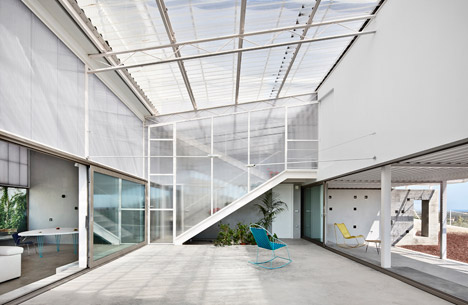
"The Seasonless House disassociates itself from this way of living to consider its own environment – domestic, adaptable and resilient for all seasons of the year," said the architects.

Seasonless House was constructed from materials that aim to give inhabitants greater control over internal temperatures, irrespective of the climate.
It predominantly consists of concrete slabs and a double layer of cellular polycarbonate panelling – a type of corrugated plastic with strong insulating properties.
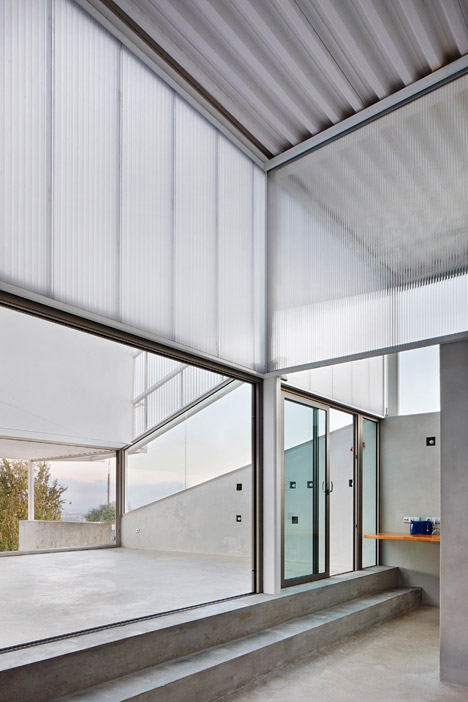
Each side of the house is clad in a specific variation of panelling and sheets of glass, depending on its orientation towards the sun, to help retain or lose heat.
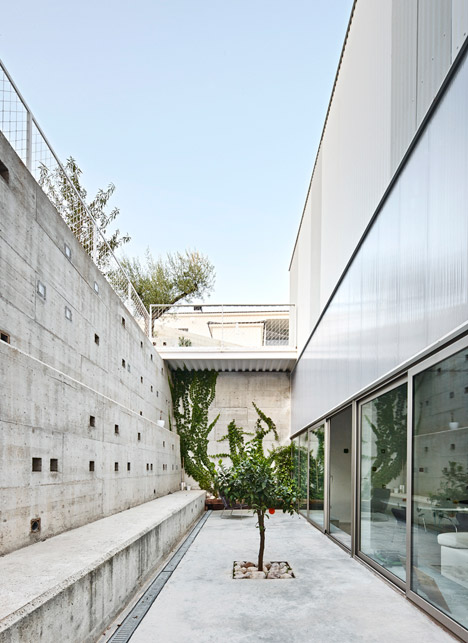
The panelling, supported by a white metal framework, gives the house a soft white colouring that blends with the rendered facades of neighbouring properties.
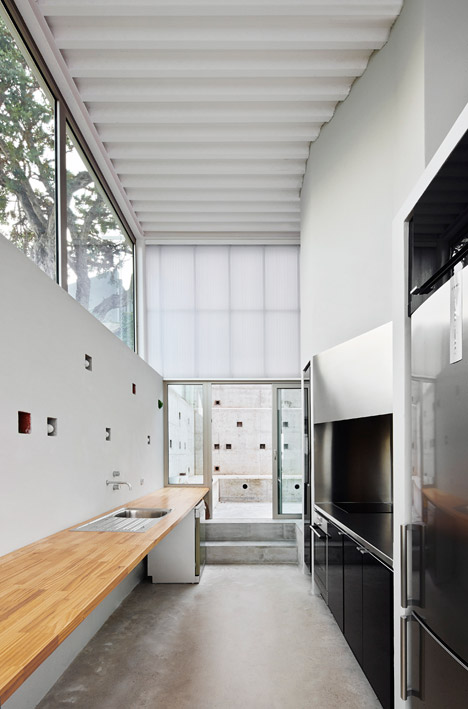
In places the corrugated sheeting runs across windows, while in others expanses of glass are left unshaded.
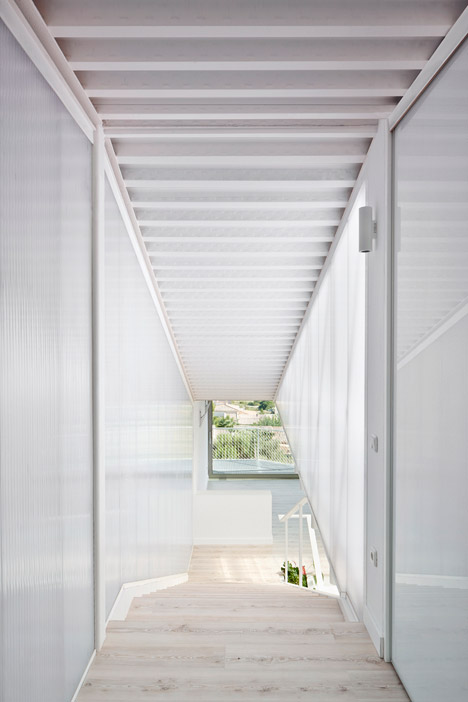
Three bedrooms and a terrace sit on top of a large open-plan living space at the back of the house, while a single-height volume containing a master bedroom and ensuite bathroom is raised on stilts in front of the enclosed yard.
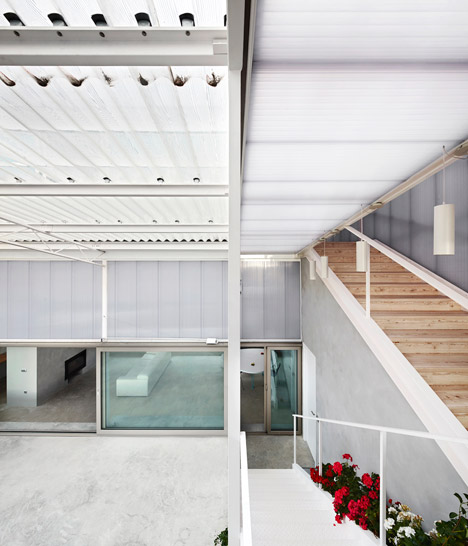
The covered porch creates an intermediate space between indoors and outdoors. With a cast concrete floor and translucent panels of plastic and glass, it is a space the architects say is both "open and closed at the same time".
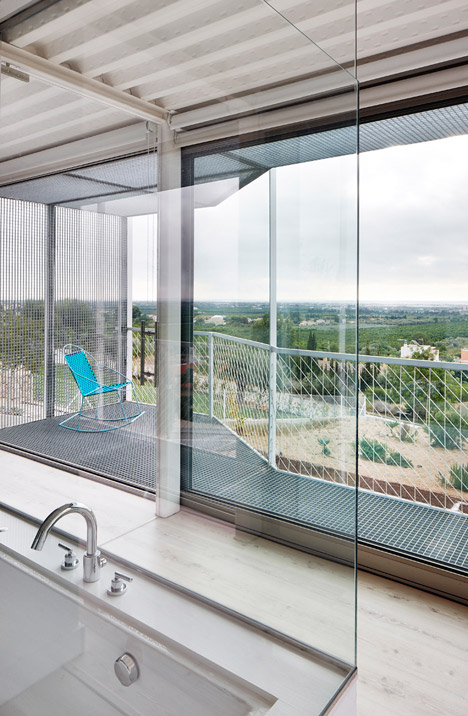
This space is accessed via a flight of concrete steps that wind down the hillside to the lower floor, or via a walkway at the rear of the building that leads into the upper storey.
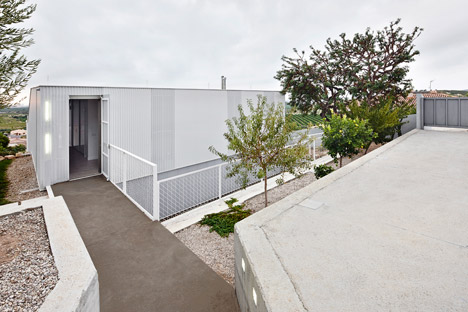
A double-height door with a white frame and a ribbed plastic cladding opens from the internal porch into the wooden stairwell that connects with the first-floor bedrooms.
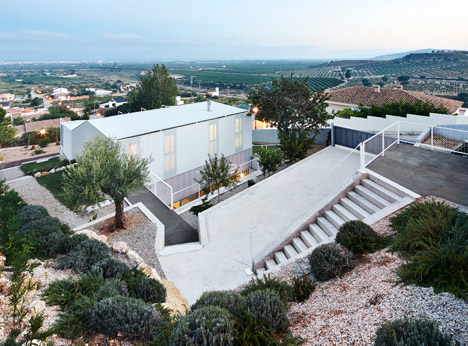
Downstairs, a vast open-plan living space has glass sliding doors and an adjacent a narrow galley kitchen with concrete floor and a long wooden worktop situated under a high-level window.
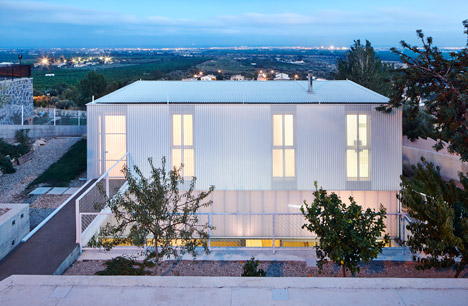
Photography is by José Hévia.
Project credits:
Architects authors: Irene Castrillo Carreira y Mauro Gil-Fournier Esquerra
Architects collaborators: Ma Eugenia castrillo
Technical architects: Proyecto: José María Herás | Obra: Cesar Villalonga. Cota Zero
Structures: Francisco Fiol. Fitconsult, sl
